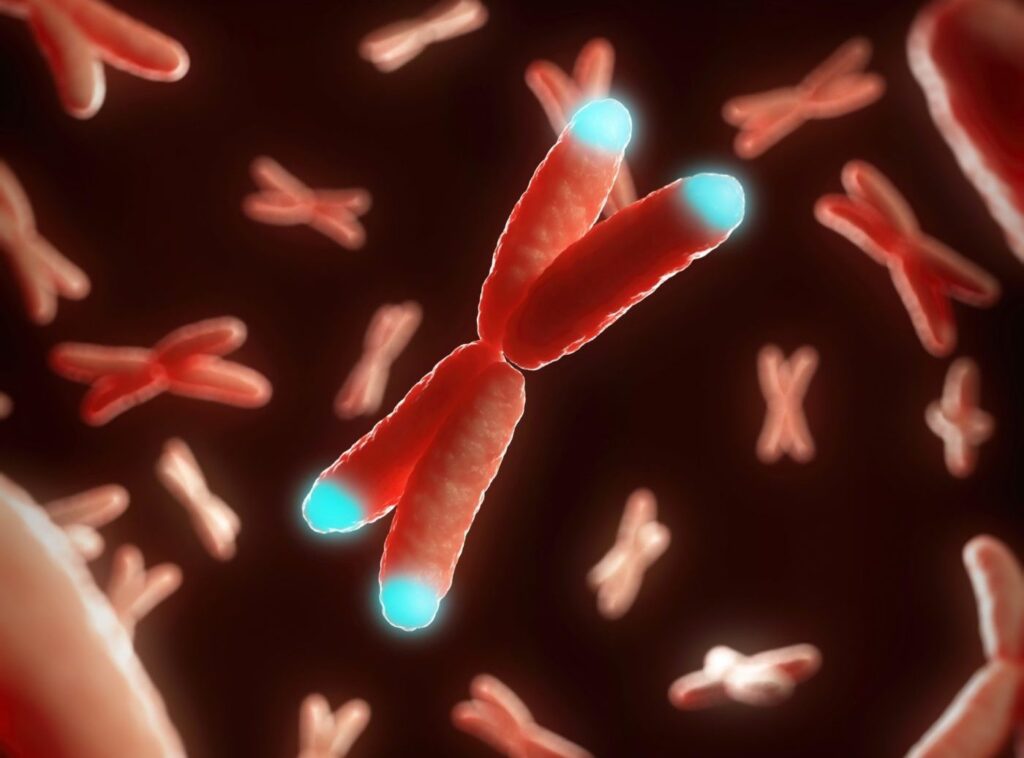When a cell divides, a small section of the telomere of each chromosome is worn away. While most cells use the enzyme telomerase to mitigate this loss, about 10–15% of cancers use a different mechanism called the alternative lengthening of telomeres (ALT) pathway. In a new Molecular Cell study, scientists from the University of Pittsburgh and their collaborators elsewhere described a novel tool that could help researchers gain new insights into the ALT pathway.
In the paper titled “TRIM24 directs replicative stress responses to maintain ALT telomeres via chromatin signaling,” the scientists described the biotinylation of lac operator (LacO) array replication stress protein network identification (BLOCK-ID) technique. It uses mass spectrometry and single-cell fluorescence microscopy techniques to identify and visualize proteins at stressed replication forks. The process by which these splits occur, when the DNA helix unwinds during cell division, can stall and proteins become stuck on DNA creating a protein barrier.
“A replication fork is like a train coming along train tracks, but if the line ends suddenly due to a protein barrier, the train will collide,” said Roderick O’Sullivan, PhD, a professor in UPMC’s department of pharmacology and chemical biology and the UPMC Hillman Cancer Center. “BLOCK-ID is like an artificial barrier that allows us to monitor a collision event at one very specific part of the cell.”
As the name implies, BLOCK-ID uses an enzyme to add a biotin molecule to all proteins that play a role at the collision event. This acts like a tag that says “this protein has been in contact with the protein barrier,’” explained O’Sullivan. “Even though proteins may move to another part of the cell, we can tell they were at the collision event because they are marked for life, allowing us to trace brief interactions that would normally be missed.”
Using this method, the researchers identified a protein called TRIM24 as an essential player in the ALT pathway of cancer cells. Specifically, “TRIM24 is recruited to telomeres via a p300/CREB binding protein (CBP)-dependent acetylation chromatin signaling cascade to organize the assembly of ALT-associated promyelocytic leukemia (PML) bodies and promote de novo telomere DNA synthesis,” the researchers wrote in the paper.
In other words, “if you remove TRIM24 from normal cells, they can tolerate it, but if you remove this protein from ALT cells, they don’t like it,” said O’Sullivan. “Without TRIM24, telomeres in ALT cells become a mess: they shorten, and they become destabilized and non-functional.”
This is important because until now, scientists believed that PML protein was essential for ALT because it forms a shell around telomeres, creating a specialized environment for other repair proteins. However, when the researchers tethered TRIM24 to telomeres in cancer cells lacking PML, they found that the telomere repair shells still formed. It demonstrates “how important TRIM24 is to the ALT mechanism,” according to O’Sullivan. “It also tells us that ALT has inbuilt redundancies” which is “really important because if we are going to target ALT, we need to understand its complexities.”
Insights into ATL’s mechanisms could bring scientists one step closer to developing novel cancer therapies that target this process. “ALT is found in some of the worst cancers, such as pancreatic neuroendocrine tumors, osteosarcomas, and subsets of glioma,” O’Sullivan said. “Interfering with ALT in these cancers may be a novel therapeutic approach, which represents a huge biomedical window of opportunity.”



